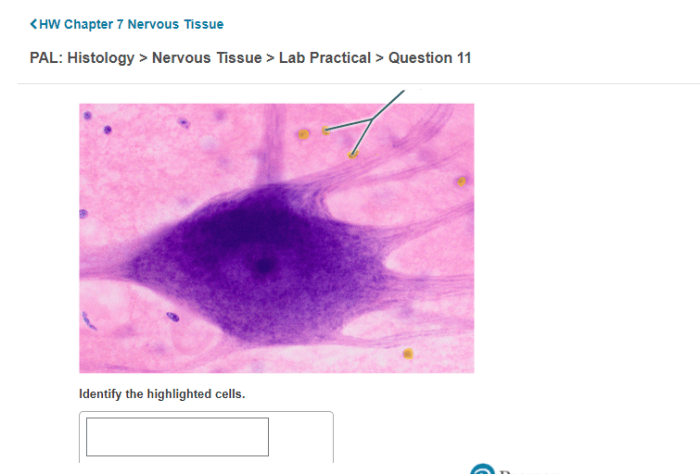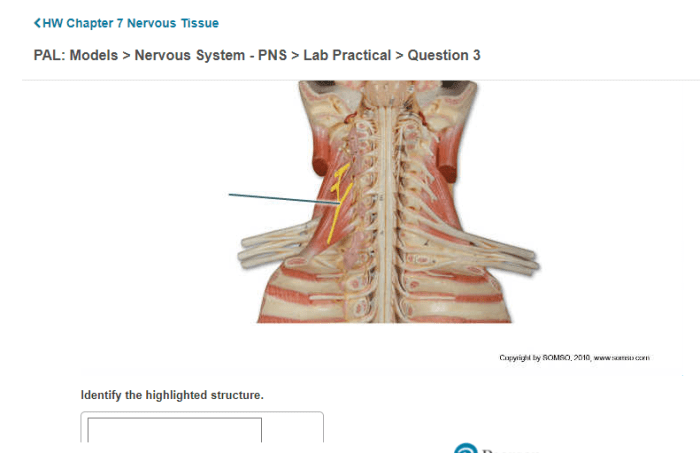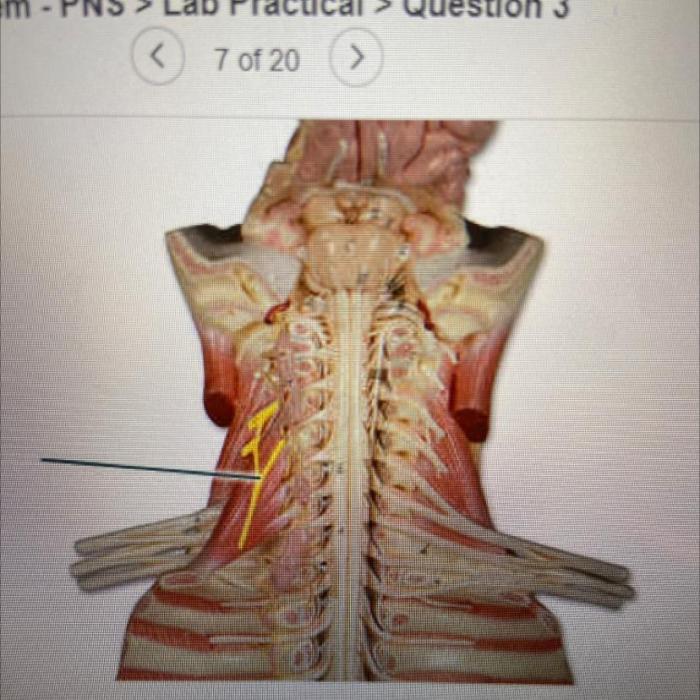Identify the highlighted structure nervous system – In the realm of human biology, the nervous system stands as a captivating subject, intricately orchestrating the symphony of bodily functions. This discourse embarks on an illuminating journey to identify the highlighted structure of this extraordinary system, unraveling its intricate composition and the pivotal role it plays in shaping our very existence.
The nervous system, a marvel of biological engineering, serves as the body’s primary communication network, facilitating the seamless exchange of information between the brain, spinal cord, and peripheral nerves. Through a symphony of electrical and chemical signals, it orchestrates our thoughts, actions, and sensations, enabling us to navigate the complexities of our environment with remarkable precision.
Identify the highlighted structure nervous system

The nervous system is a complex network of specialized cells that coordinates actions and reactions throughout the body. It receives sensory information from the environment, processes it, and triggers appropriate responses. The nervous system plays a vital role in maintaining homeostasis, controlling movement, and regulating bodily functions.
Structure and Function of the Nervous System, Identify the highlighted structure nervous system
- The nervous system consists of two main divisions: the central nervous system (CNS) and the peripheral nervous system (PNS).
- The CNS includes the brain and spinal cord, which are responsible for processing and coordinating information.
- The PNS consists of nerves that connect the CNS to the rest of the body, transmitting sensory and motor signals.
Different Parts of the Nervous System
- Brain:The brain is the control center of the nervous system, responsible for higher-order functions such as cognition, memory, and emotions.
- Spinal cord:The spinal cord is a long, cylindrical structure that extends from the brain down the back. It serves as a conduit for sensory and motor signals between the brain and the rest of the body.
- Nerves:Nerves are bundles of axons that transmit electrical signals throughout the body. They connect the CNS to muscles, glands, and sensory receptors.
- Sensory receptors:Sensory receptors are specialized cells that detect changes in the environment and convert them into electrical signals.
- Effectors:Effectors are muscles or glands that respond to signals from the nervous system.
Examples of Nervous System Control
- Reflexes:Reflexes are automatic, involuntary responses to stimuli that bypass the brain.
- Motor control:The nervous system controls voluntary and involuntary muscle movements.
- Hormonal regulation:The nervous system interacts with the endocrine system to regulate hormone secretion.
- Sensory perception:The nervous system processes sensory information from the environment, allowing us to perceive the world around us.
Expert Answers: Identify The Highlighted Structure Nervous System
What is the primary function of the nervous system?
The nervous system serves as the body’s communication network, transmitting information between the brain, spinal cord, and peripheral nerves to control bodily functions, thoughts, and sensations.
How does the nervous system control movement?
The motor nervous system, a component of the peripheral nervous system, transmits signals from the brain and spinal cord to muscles, enabling voluntary and involuntary movements.
What is the role of neuroglia in the nervous system?
Neuroglia, also known as glial cells, provide structural support, insulation, and nourishment to neurons, ensuring their optimal functioning.


